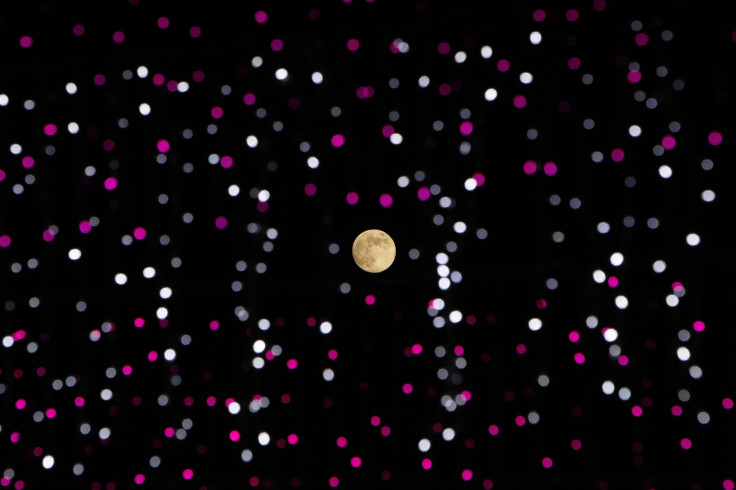Blue Moon 2015: Friday Marks The Occurrence Of A Rare Cosmic Event

On Thursday, July 31, skygazers will get an opportunity to glimpse a rare lunar event, called a blue moon. Friday marks the first chance since 2012 to witness a blue moon, and the next won't come until 2018.
There are 12 full moons in a year, most of the time. But when a year has one extra full moon, that moon is referred to as the “blue moon.” Therefore, blue moon has nothing to do with the color of the celestial body; it appears silvery gray, just like the usual moon.
The phenomenon of the actual moon blue in color is due to atmospheric pollution -- often generated by smoke, sand, forest fire or volcanic activity – due to a terrestrial disturbance. The disturbance creates a color filter, which gives a blue appearance to the moon.
The U.S. Naval Observatory describes the appearance of the second full moon in the month of July as “the third full moon to occur in an astronomical season in which four full moons fall."
The blue moon last appeared on Aug. 31, 2012, and the next one will appear on Jan. 31, 2018. The blue moon appears when a synodic period of 29.5 Earth days being less than the days in a calendar month. Synodic period is the time taken by the moon to return to the same point of the lunar cycle. In the case of a blue moon, the like phase is the return of the full moon from a previous full moon in the same calendar month.
The way the blue moon is defined today is the result of a historical mistake. The Maine Farmers' Almanac defined the blue moon as the “third full moon in a three-month season that has four moons rather than the usual three.” However, in 1946, an article published in Sky & Telescope magazine misinterpreted it as a second full moon in a calendar month.
The “once in a full blue moon” will appear at 6:43 a.m. EDT on July 31, 2015.
© Copyright IBTimes 2024. All rights reserved.





















